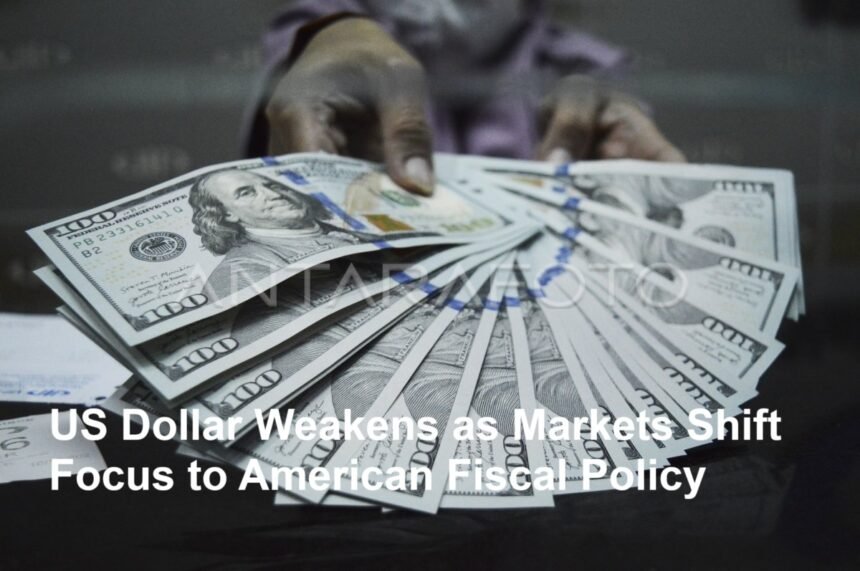In recent months, the US dollar has experienced notable fluctuations, with a discernible weakening trend that has garnered the attention of investors, analysts, and policymakers alike. As of June 2025, one of the most prominent factors influencing the greenback’s performance is not just the Federal Reserve’s monetary policy, but also the trajectory of America’s fiscal policy. While interest rates and inflation continue to play crucial roles, the spotlight now shines brightly on governmental spending, tax strategies, and the looming threat of political gridlock in Washington.
From the perspective of global investors, 2024 and the first half of 2025 brought a rollercoaster ride for the US dollar. After a period of relative strength, the tide has turned. The dollar index, which measures the dollar’s value against a basket of six major currencies, has slipped downward. This softening can partially be blamed on expectations that the Federal Reserve may pause or even consider cutting interest rates, but the undercurrent is decisively shaped by increasing concerns over the US fiscal outlook.
The US government’s expansive fiscal policies—ranging from pandemic relief packages to ambitious infrastructure investments—have left the country with a ballooning deficit. As of mid-2025, the federal budget deficit is projected to reach sky-high figures, casting a shadow over the nation’s long-term economic health. Financial markets are especially jittery about the sustainability of such spending and the potential for a ballooning national debt to jeopardize America’s creditworthiness.
One critical area of focus is the political landscape. With the US presidential election drawing closer, debates over tax reform, entitlement spending, and deficit reduction are heating up. The two main parties have diverging visions: one pushes for bold public investments and expanded social safety nets, while the other calls for fiscal restraint and reduced government intervention. The markets crave clarity, but the temptation for both sides to dig in their heels raises the risk of policy standoffs which—if protracted—could shake investor confidence and lead to more pronounced dollar weakness.
The international ramifications of US fiscal policy turbulence are hard to ignore. Many countries, especially those holding large reserves of US Treasury securities, are keenly watching how Congress and the White House grapple with the mounting deficit. A perceived inability to manage fiscal challenges or, worse, any hint of a government shutdown or debt ceiling crisis, could trigger a selloff in US assets. This, in turn, would weigh on the dollar further and potentially nudge central banks worldwide to diversify their holdings.
Moreover, the fiscal situation intersects with economic fundamentals. If government spending continues at current levels without corresponding revenue increases, fears could mount about inflationary pressures building anew. While inflation in the US has moderated somewhat compared to its 2022 peak, it remains a potential wild card. Should markets sense the Federal Reserve’s ability to keep inflation in check is undermined by fiscal profligacy, the dollar could suffer another leg down.
Against this backdrop, global investors are recalibrating their strategies. Some turn to gold and other safe-haven assets as hedges against dollar volatility, while others cast their gaze toward currencies like the euro, yen, or Swiss franc. Emerging market currencies, traditionally vulnerable to a strong dollar, may now get some breathing room if the greenback continues to falter.
In my view, the interplay of US fiscal policy and its effects on the dollar is a dance of economic logic, political theater, and market psychology. For anyone involved in international finance or trade, it’s an enthralling time—albeit one fraught with uncertainty.
Looking ahead, the story of the US dollar will likely hinge as much on Congressional debates and deficit reports as on the pronouncements of the Federal Reserve. Until lawmakers chart a clearer fiscal path, I expect the dollar’s fortunes to remain at the mercy of fiscal headlines and Washington deal-making. For now, the world watches and waits, dollar in hand, for America’s next fiscal move.












